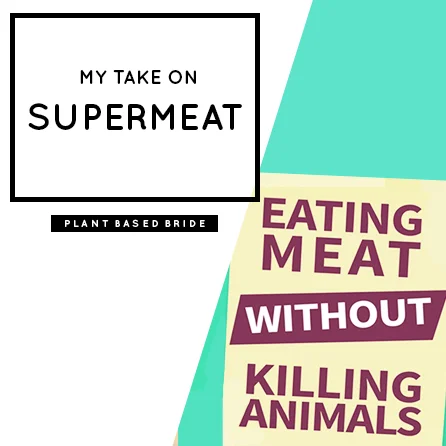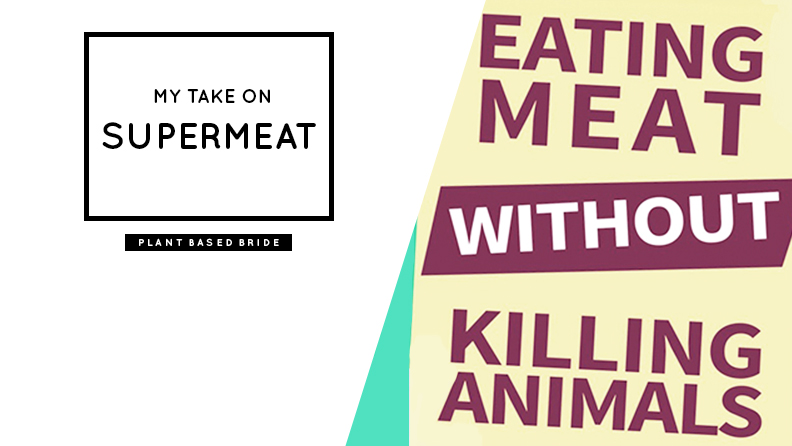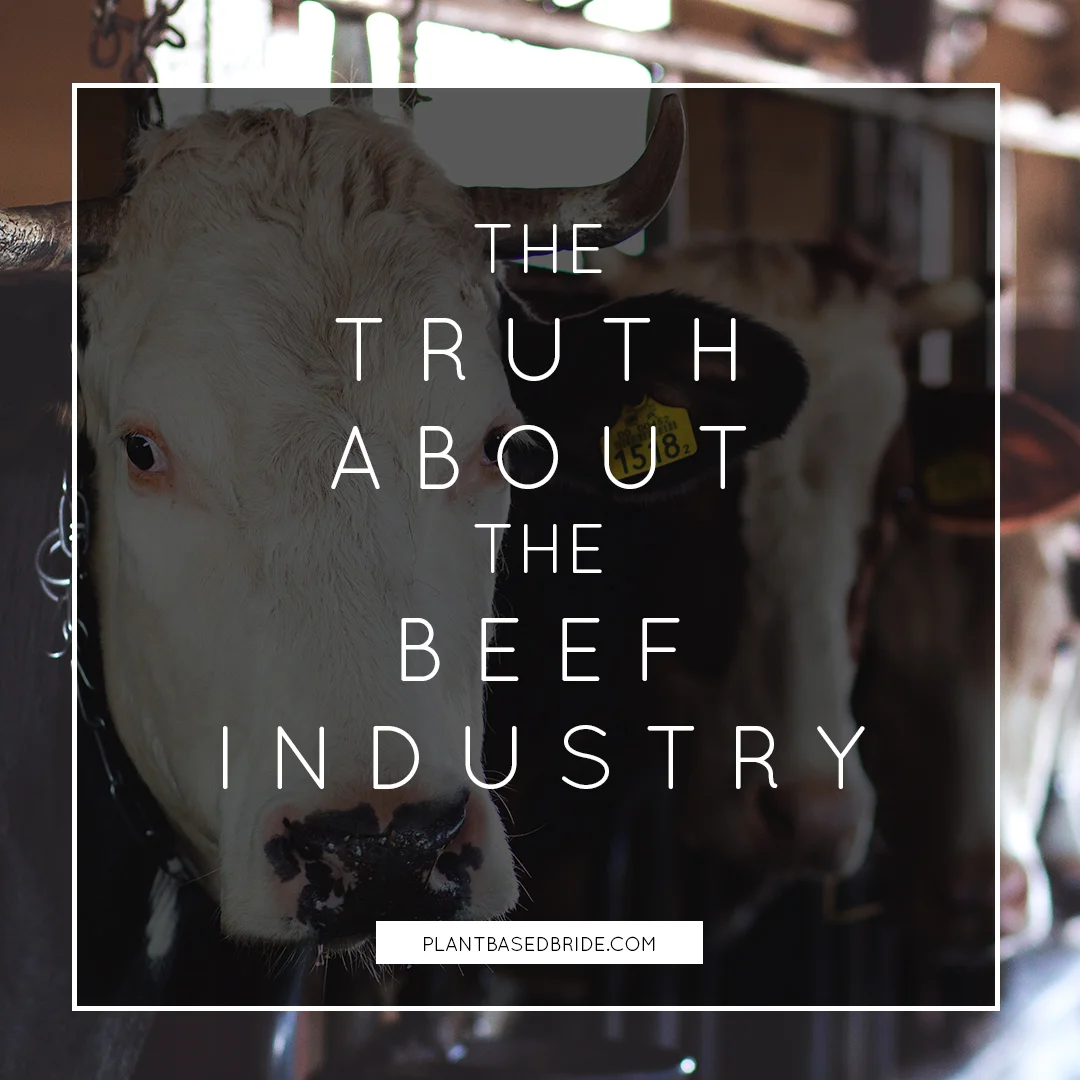
the blog.
Should We Be Pro GMO? (Part 1)
GMOs. Are they good or bad? They've been a talking point for quite a while now, with vegans and non-vegans everywhere sharing their two cents on the matter. I've pretty much stayed out of it. I've heard things, I've watched some videos on the topic, but I'm no expert. Today, I'm going to lay out my understanding of the available evidence in the hopes that we can determine once and for all if we should be avoiding GMOs or embracing them.
Or just leave even further confused by the conflicting evidence.
GMOs. Are they good or bad? They've been a talking point for quite a while now, with vegans and non-vegans everywhere sharing their two cents on the matter. I've pretty much stayed out of it. I've heard things, I've watched some videos on the topic, but I'm no expert. Today, I'm going to lay out my understanding of the available evidence in the hopes that we can determine once and for all if we should be avoiding GMOs or embracing them.
Or just leave even further confused by the conflicting evidence.
To start, what are GMOs?
Well, they're genetically modified organisms.
When did we start modifying the genes of organisms?
We’ve been modifying organisms for the entire history of agriculture with selective breeding of plants and animals. Current GMOs are more accurately described as “genetically engineered organisms". This (relatively) new form of modification was first done in labs in the 1920s and involves fusing the genes from one species into another in a process called transgenesis.
Why do we genetically modify organisms?
One reason we began modifying foods was in hopes of higher yields.
We still do it for this reason.
It is claimed that genetically modified foods allow for more yield per area of land, meaning we can feed more people without further destruction of our planet (such as deforestation in the amazon for agriculture). But do GMOs really improve yields? One argument to the contrary claims that it is in fact the opposite, due to the proliferation of glyphosate (the active ingredient in the herbicide, Roundup). The herbicide depletes the soil of essential nutrients and beneficial organisms, reducing the quality of the soil. This reduced soil quality leads to slowed crop development and diseases, resulting in lower yields.
It has also been stated that GMOs are no better at tolerating poor soil or unstable climate conditions than non-engineered crops. This flies in the face of the common pro-GMO argument of ensuring food security. Claims that GMOs are the way to feed the hungry and support a growing human population don't seem to be supported by all of the data, which shows that natural breeding methods used to develop flood-tolerant rice, drought-tolerant maize, and pest-resistant chickpeas may in fact be more effective in this arena. We do know, however, that we already grow enough crops to feed 10-11 billion people if we redistribute these crops to humans, rather than filtering them first through livestock. This filtering of our food supply through animals leads to an energy yield reduction of 90%.
What foods tend to be genetically modified?
Most GMOs are used as animal feed and in processed foods. Over 90% of soy, corn, canola, and sugar beets in the US have been genetically engineered.
What are the impacts of GMOs on human health?
Glyphosate (Roundup) is the most commonly used herbicide for GMO crops. It was previously determined to be safe for mammals, as the way it kills plants is through the disruption of the shikimate pathway, involved in the synthesis of important amino acids and other components. It is widely considered safe for animals, as we do not possess this pathway to be disrupted.
However, a recent study casts doubt on its safety. The study found that glyphosate inhibits cytochrome P450 (CYP enzymes) which play important biological roles in the human body. Exposure to glyphosate 'enhances the damaging effects of other foodborne chemical residues and environmental toxins' with a negative impact on the human body which is both 'insidious and manifests slowly over time...'
Here I will include the full abstract of the recent study for reference:
'Glyphosate, the active ingredient in Roundup®, is the most popular herbicide used worldwide. The industry asserts it is minimally toxic to humans, but here we argue otherwise. Residues are found in the main foods of the Western diet, comprised primarily of sugar, corn, soy and wheat. Glyphosate's inhibition of cytochrome P450 (CYP) enzymes is an overlooked component of its toxicity to mammals. CYP enzymes play crucial roles in biology, one of which is to detoxify xenobiotics. Thus, glyphosate enhances the damaging effects of other food borne chemical residues and environmental toxins. Negative impact on the body is insidious and manifests slowly over time as inflammation damages cellular systems throughout the body. Here, we show how interference with CYP enzymes acts synergistically with disruption of the biosynthesis of aromatic amino acids by gut bacteria, as well as impairment in serum sulfate transport. Consequences are most of the diseases and conditions associated with a Western diet, which include gastrointestinal disorders, obesity, diabetes, heart disease, depression, autism, infertility, cancer and Alzheimer’s disease. We explain the documented effects of glyphosate and its ability to induce disease, and we show that glyphosate is the “textbook example” of exogenous semiotic entropy: the disruption of homeostasis by environmental toxins.' (Read the full study here)
This study seems to indicate that there is, in fact, a negative health impact on humans from the use of GMOs. If not from the GMO crops themselves, at least from the herbicides used in conjunction with them.
There are claims of the positive health impact potential of GMO crops, as seen with golden rice. This variety of rice was infused with beta keratin to provide Vitamin A to populations of humans suffering from severe deficiency. Preventing blindness in children is a noble task, but what negative impacts may be carried along with the good?
We simply don't know how GMOs affect genomes and the full picture of their impact on our health as a whole. More than 50 countries have restricted GMO crops and passed laws to require labelling of GMOs.
What are the impacts of GMOs on the health of non-human animals
There are both direct and indirect impacts from GMOs. First let's consider the most direct impacts: GMOs are tested on animals. Some claim this is a reason to support them, as less opposition will lead to less testing to determine safety. But seeing how we don't know that they're safe, what should we do? I'm concerned about the findings of the above study, but I am also vehemently opposed to animal testing. So how do we proceed?
A positive result of GMOs is the development of synthetic insulin. Insulin was initially derived from the ground up pancreases of cows and pigs, but now vegans and others opposed to animal suffering can access non-animal derived insulin.
An example of an unintended indirect negative impact of GMOs on non-human animals is the decimation of monarch butterflies that has occurred over the past two decades. Scientists developed a very effective herbicide called Glyphosate (colloquially known as Roundup) to be used on GMO crops. So effective, in fact, that it has the ability to kill all plants that don't have a specific gene. Scientists involved in the development of this herbicide injected the roundup-resistant gene into common crops such as soy beans and corn to effectively protect these crops from a pesticide with the ability to literally kill anything green.
When the herbicide is sprayed in a field, it kills everything within a certain radius (even outside of the limits of the field) without this injected gene. In this way it has been able to kill vast quantities of milk weed, a plant that monarch butterflies rely on for their survival. This unintended consequence of genetic modification has lead to a reduction in monarch butterfly population by as much as 90%.
How many other insects and pollinators are being negatively impacted by extremely powerful herbicides, pesticides, and GMOs?
Additionally, monoculture, made more viable by genetic modification, makes it very difficult for bees as pollinators to do their jobs and has a serious negative impact on the environment. These are unintended and indirect consequences of GMOs, and we can't know quite how serious of an impact it will turn out to be.
The more I research, the more questions I have. I want to pause here, and continue next week with a look into the impact of GMOs on the environment, as well as the true cost of corporations patenting living organisms, as Monsanto has.
If you notice errors in this post or have further information on these topics, please let me know in the comments below!
Until next time,
SuperMeat
SuperMeat. Cultured meat grown from real cells. What kind of impact will it have on the vegan movement and the planet at large? Let's chat.
SuperMeat. Cultured meat grown from real cells. What kind of impact will it have on the vegan movement and the planet at large? Let's chat.
Watch here or on YouTube, and don't forget to subscribe to my channel for new videos every Monday and Saturday!
What are your thoughts on SuperMeat? Would you eat it? Let me know in the comments below!
Until next time,
The Truth About The Beef Industry
Unlike most animal foods, many people are not only aware of the negative impact of eating beef on their health but actively avoiding it - and they're right to.
But it's not just for health reasons that beef is a bad choice. The raising of cattle has more of an environmental impact than you might realize, and is definitely no fun for the cows.
Let's explore the truth behind the beef industry.
Unlike most animal foods, many people are not only aware of the negative impact of eating beef on their health but actively avoiding it - and they're right to.
But it's not just for health reasons that beef is a bad choice. The raising of cattle has more of an environmental impact than you might realize, and is definitely no fun for the cows.
Let's explore the truth behind the beef industry.
HEALTH
For a long time beef was seen as a 'super food', and I can understand the thought process, however misguided. Not only is beef a concentrated source of calories (which we were in dire need of for the majority of the centuries we have existed on earth) and high in protein, which we all know is the most important macronutrient. Or is it?
The Real Rundown On Protein
Dr. Garth Davis does an incredible job of debunking the protein myths in his book Proteinaholic, and I would highly suggest giving it a read for more in depth information. In the meantime, let me summarize some of the points that stood out to me the most:
You Don't Need As Much Protein As You Think
While it is true that protein is essential for human health, we don’t need nearly as much of it as we think we do. The World Health Organization published a technical report in 2002 titled Protein and Amino Acid Requirements in Human Nutrition in which they concluded that the average healthy adult of either gender requires a minimum of 0.66g of protein per day per kg of lean body weight. For example, a 150lb (68kg) person would need 44.9g of protein per day to meet the minimum of their daily protein needs - IF they had no fat on their body (not likely). They also recommend adding a buffer to guarantee "safe levels" of protein intake per day, which brings their daily recommendation up to 0.83g per kg of lean body weight. This would translate to the same 150lb (68kg) person requiring 56.4g of protein per day (once again, if they had no fat on their body. It is far more likely that their lean body mass would fall in the range of 90 to 130 lbs or approximately 41 to 59 kg. This person would actually only require 34 to 49g of protein a day, even at the higher protein recommendation.)
Surely, though, more is better? We certainly don’t want to be deficient in this important macronutrient. Dr Garth Davis hit the nail on the head when he said: “In all my years in medicine I have never, ever, seen a patient who was suffering from protein deficiency. I have searched the medical literature and cannot find a single case of protein deficiency in someone eating adequate calories.” In other words, if you are eating enough calories, you will get enough protein.
But what if we want to be on the safe side? Get just a little bit extra? That’s not really a good idea. Unlike fat and carbohydrates, the body doesn’t have a storage system for excess protein. It will instead be converted into fat or broken down into potentially toxic nitrogen components.
Animal Protein Isn't Actually Superior To Plant Protein
You may have heard of essential amino acids. These are the 9 amino acids the human body cannot create on its own, meaning they must be ingested on a regular basis. These nine essential amino acids are:
- histidine
- isoleucine
- leucine
- lysine
- methionine
- phenylalanine
- threonine
- tryptophan, and
- valine
You may have also heard that plant protein is not ideal as each individual type of plant does not contain all of the essential amino acids. This is what lead to the ‘complete protein’ craze. As meat and dairy products contain all nine, they were seen as superior sources of protein. However, it has been proven time and time again that not only do plants in their vast variety contain all of the nine essential amino acids, but that all nine do not need to be ingested at the same meal for our bodies to utilize them and synthesize important proteins. So while eating rice with beans is delicious, you needn’t eat them at the same time for your body to use the amino acids provided.
As long as you are getting a balance of amino acids over the course of the day (as in eating a variety of plant foods) your body is more than able to combine them as required for various necessary functions. There is no need to pair proteins or worry about combining foods to create complete proteins at every meal.
To doctors before the mid 20th century, animal protein must have seemed like a miracle cure. It was great at helping people to gain fat, allowing them to survive famine, resist death from infectious disease, withstand hard labour, and to live in harsh conditions. Plus, since the population rarely survived past 50 years old, any long-term negative effects of animal protein consumption had no chance to develop.
Unfortunately, nowadays we live far more sedentary lives. We live in temperate conditions protected by vaccines and with constant access to calorie-dense foods. We live well into our 80s and beyond - ample time to suffer from the less-than-ideal health impacts of too much animal protein.
We now know that we needn’t worry about getting ‘complete proteins’ so long as we ingest all of the nine essential amino acids over the course of the day. Luckily, plant foods have amino acids in abundance.
Despite this abundance, many still believe that animal protein is superior. The fact is, in essentially every well-conducted study, animal protein is associated with a long list of unwanted health defects. This list includes weight gain, diabetes, hypertension, heart disease, cancer, osteoporosis, inflammatory bowel disease, rheumatoid arthritis, gall bladder disorders, kidney stones, irritable bowel syndrome, and gout. This is due to the high cholesterol (completely absent from animal foods), saturated fat (all but absent from animal foods, other than coconuts), and uric acid found in animal protein.
An example of this effect of animal protein can be found in the people of Tunisia. From 1997 to 2009, a mere 12 years, deaths from heart disease increased 17% accompanied by an increase in cholesterol, blood pressure, and a staggering 74% increase in the obesity rate. The catalyst? The population increased their animal protein consumption from 14% all the way up to 27% of total daily calorie intake, as they transitioned from a high carbohydrate diet low in protein (with a focus on grains) to a high protein diet, doubling their milk and meat intake.
The People Who Live The Longest Don't Eat Meat
Have you ever heard of the Blue Zones? Dan Buettner’s 2010 book summarized his findings after having spoken to the groups of people with the highest longevity in the world. It is estimated that many of the blue zones (whose inhabitants often live healthily for over a century) get 70-80 % of their calories from carbohydrates, 10-15% from protein, and 8-12% from fat, which is far less than the protein intake many Westerners are aiming for of over 30%.
Do you know the kind of diet that easily lands between 10-15% protein and remains low fat? A whole foods plant based, aka vegan, diet.
Check out Proteinaholic for even more mind-blowing protein facts!
Saturated Fat
Beef is not only full of animal protein (which has been linked to cancer and a host of other diseases) but is absolutely swimming in fat, most of which is saturated.
Despite the resurgence of claims that saturated fat is good for our health, I'm going to have to burst your bubble on this one. It's not. And deep down, everyone knows it.
Consumed in high quantities (such as those found in meat) results in inflammation, higher blood cholesterol, and an increased risk of diabetes, heart disease, and cancer. As you might recall, the blue zones averaged a total fat intake of 8-12%, which is consistent with a low fat vegan diet.
Fibre
If this wasn't enough, meat contains no fibre whatsoever. Fibre is known to:
- help control blood glucose;
- reduce the risk of obesity due to its ability to increase satiation;
- regulate bowel movements;
- manage blood pressure and cholesterol (reducing the risk of heart disease), and;
- reduce the risk of cancer. (read this post for more on fibre)
So while the meat you eat is increasing your risk of dying of cancer or heart disease due to it's animal protein and high saturated fat and cholesterol content, it's also crowding out the high fibre foods from your diet that actually have the power to protect you against those very fatal diseases!
Cholesterol
It has been established that cholesterol is a significant risk factor for heart disease. But did you know that only animal products contain cholesterol? It's true that we need a small amount of cholesterol for our bodies to function normally, but we actually synthesize the cholesterol we need internally. Any we take in through our diet is in excess of our cholesterol requirements.
A clear example of this effect was observed by Dr. William Castelli, who found that amongst tens of thousands of people a heart attack never occurred in someone with a total cholesterol under 150. For reference, in the US the average cholesterol level is 210, the average for vegetarians is 161, and the average for vegans is 133.
Want more proof?
- Poland: After the Berlin wall came down, the consumption of meat dropped significantly while fruit intake increased. What happened as a result of this dietary change? A 24 percent drop in cardiac mortality.
- Finland: Once they had the highest levels of heart disease in the world, but in 1972 they began their 'North Karelia' project in which they decreased their fat intake by drastically reducing the consumption of sausage and butter and switching to vegetable oils and low-fat milk, increased fruit and vegetable intake, and cut out smoking. The result? An 80% drop in heart disease and a life expectancy increase of 7 years.
- Postmenopausal Women: A statistical analysis was conducted on 29,000 postmenopausal women over a period of 15 years. The finding? Replacing animal protein with plant protein lowered the risk of developing heart disease by 30% and replacing carbohydrates with red meat increased the risk by 33%.
- The Harvard Review: In 2014 the review demonstrated that those who have suffered a heart attack and adopt a high protein/low-carb diet are at a much higher risk of dying from their heart disease than someone consuming a high plant protein diet. The chair of Harvard’s Department of Nutrition, Dr. Walter Willet, has since stated that people should emphasize plant sources of protein rather than animal sources.
Iron
Most people are under the impression that heme iron (from animal sources) is better utilized by the human body than non-heme iron (from plant sources), and therefore a superior choice.
This is, however, just a tiny portion of the whole picture.
Yes, heme iron is the kind of iron our bodies use, and therefore the heme iron we consume can be utilized immediately without conversion. People tend to forget, however, that non-heme iron is easily converted to heme iron in our bodies and is no less suited to our needs.
Not only this, but people are completely unaware of the negative impacts the consumption of heme iron has on our bodies. Heme iron causes oxidation and is directly associated with the development of heart disease as two separate studies found in 2013. The oxidation that occurs as a result of heme iron intake also affects the pancreas' ability to secrete insulin, which can lead to diabetes. These effects are not observed with the intake of non-heme iron from plant sources.
ENVIRONMENT
If you haven't already watched Cowspiracy, allow me to suggest that you put aside 90 minutes of your day and do it! The documentary does a great job of demonstrating the effects of animal agriculture on the environment and the statistics and facts they share are absolutely staggering.
Let me give you just a taste of the shocking information they bring to light in the film (from cowspiracy.com/facts):
'Livestock and their byproducts account for at least 32,000 million tons of carbon dioxide (CO2) per year, or 51% of all worldwide greenhouse gas emissions.'
'Cows produce 150 billion gallons of methane per day.'
'Methane is 25-100 times more destructive than CO2 on a 20 year time frame.'
'Livestock is responsible for 65% of all human-related emissions of nitrous oxide – a greenhouse gas with 296 times the global warming potential of carbon dioxide, and which stays in the atmosphere for 150 years.'
'Emissions for agriculture projected to increase 80% by 2050.'
These numbers may give you pause, but never fear - reducing worldwide methane emissions by reducing the amount of animals raised for livestock drastically can make an almost immediate positive impact on reducing greenhouse gasses in our atmosphere.
But animal agriculture doesn't just effect our atmosphere.
It also has an effect on our water supply...
'2,500 gallons of water are needed to produce 1 pound of beef. ' (this is a conservative estimate and is the equivalent of showering for 2 months)
'Animal Agriculture is responsible for 20%-33% of all fresh water consumption in the world today. '
...and on our land.
'Livestock covers 45% of the earth’s total land.'
'Animal agriculture is the leading cause of species extinction, ocean dead zones, water pollution, and habitat destruction.'
'1/3 of the planet is desertified, with livestock as the leading driver.'
'Livestock operations on land have created more than 500 nitrogen flooded deadzones around the world in our oceans.'
'In the U.S. livestock produce 116,000 lbs of waste per second.'
'Animal agriculture is responsible for up to 91% of Amazon destruction.'
'1-2 acres of rainforest are cleared every second.'
'Up to137 plant, animal and insect species are lost every day due to rainforest destruction.'
So meat isn't good for our health, and it isn't good for the environment. What about the animals?
ETHICS
Life on a factory farm is no walk in the park, as you already know. But the thing is, even traditional farms are full of inherent cruelty. If we ignore the crowding of cows by the thousands in mud and feces filled lots, a traditional farm looks a whole lot like a factory farm.
They may not intentionally abuse the animals, but they:
- dehorn them (calves only a couple of weeks old will have their horn buds burned or cut out of their heads without anesthetic);
- brand them (a hot iron is placed on unanesthetized skin causing third degree burns and permenant hair loss in the area);
- castrate them (testicles of young male calves are ripped from their scrotums, without pain relievers);
- shoot them full of antibiotics to prevent disease (80% of antibiotic sold in the US are used on livestock);
- feed them unnatural diets meant to fatten them up quickly (which results in fatal liver abscesses is as many as 32% of cattle and chronic digestive pain and impaired breathing due to bloating);
- force them to breathe air that is saturated with the same gasses that cause global warming (ammonia, methane, and other noxious chemicals from manure and flatulence - giving cows chronic respiratory problems);
- keep them in environments they aren't well suited for (where they freeze to death in the winter in montana, nebraska, and north dakota and suffer heat stroke in texas and arizona in the summer), and, finally;
- kill them brutally at a young age (after as little as one year of their 20 + year projected life span, cows are sent in crowded trucks through weather extremes to the slaughterhouse where, if they have not died in transit, they will be 'shot in the head with a captive-bolt gun and hung up by one leg then have their throats cut before finally being skinned and gutted. Some cows remain fully conscious throughout the entire process. In an interview with The Washington Post, one slaughterhouse worker said, “They die piece by piece.”'). This fate is the same for every cow, whether it lived it's life crowded and sick or 'free' on the range.
Remember that cows are gentle, intelligent animals. They are curious, social, and form deep and complex relationships with other cows. They also go to extreme lengths to escape from slaughterhouses.
Perhaps they don't want to die?
If the pain and suffering of the animals isn't enough for you, what about the pain and suffering of people around the world?
World Hunger
Many people claim that eating animals is important for feeding our growing population, but in fact eating animals filters plant foods through animals and produces less food to feed people around the world.
Let me show you what I mean.
The human population on earth as of today is 7,436,280,970, and grows by around 228,000 people every day.
Around 795,000,000 people (one in nine) don't have enough food to live a healthy, active life.
We are currently growing enough plant based food to feed 10 billion people (1.35x our current population).
So where's the disconnect?
Worldwide, at least 50% of grain harvested is fed to livestock and 82% of starving children live in countries where food is fed to animals who are shipped to Western countries to be eaten.
We have enough plants to feed every single human on earth, but rather than doing that we feed half of it to animals producing 98 times less food to go around.
Say you had one acre of land.
That acre could feed 6 vegans, 2 vegetarians, or 1/3 of a meat eater for a year.
Which allows for more resources to feed the hungry?
1.5 acres can produce 37,000 pounds of plant-based food, or 375 pounds of meat.
Still worried about your protein? (Did you skip over the health section of this article??)
Well, 15x more protein can be produced on any given area of land with plants, rather than animals.
A person who follows a vegan diet produces the equivalent of 50% less carbon dioxide, uses 1/11th oil, 1/13th water, and 1/18th land compared to a meat-eater for their food and saves 1,100 gallons of water, 45 pounds of grain, 30 sq ft of forested land, 20 lbs CO2 equivalent, and one animal’s life each and every day.
Perhaps the right choice for your health, the animals, our world, and the hungry people on it is to go vegan?
Until next time,
I have not included any graphic video in this post, but if you are interested in seeing what really goes on I would suggest watching Earthlings.
Should You Stop Drinking Coffee?
Hi. My name is Elizabeth, and I'm a coffeeholic.
It's not just one thing, but the whole that makes coffee so irresistible. The heavenly aroma, the slightly bitter toasty taste, the warm fuzzies, the kick of energy... Basically, coffee is damn good. But is it good FOR you? I'm on a mission to find out.
Why don't you come along?
Hi. My name is Elizabeth, and I'm a coffeeholic.
It's not just one thing, but the whole that makes coffee so irresistible. The heavenly aroma, the slightly bitter toasty taste, the warm fuzzies, the kick of energy... Basically, coffee is damn good. But is it good FOR you? I'm on a mission to find out.
Why don't you come along?
C O F F E E & Y O U R H E A L T H
Depression
In a 2011 study, caffeinated coffee was shown to reduce the rate of depression in women, lowering the rate further with each additional cup consumed (up to 4+ cups a day). Decaffeinated coffee did not have the same effect.
A similar result was found in Finnish men in this 2010 study, showing that heavy drinkers of caffeinated coffee (more than 3.25 cups a day) had a lower risk of developing depression than men who did not drink coffee.
A further study found an unexplained lowering in the risk of suicide with each additional cup of coffee per day.
The evidence is not definitive by any means, but these studies seem to indicate that the consumption of 3-4 cups of coffee or more a day can aid in the prevention of depression and suicide.
Diabetes
A 2002 study found a 50% reduction in the risk of developing type 2 diabetes with 7 or more cups of coffee a day, compared to those who drank 2 or fewer cups a day.
This finding was supported by an observational reduction in the risk of diabetes and obesity in those with a higher coffee intake in a study conducted in 2015 and by a 2014 Harvard study which found that over a 4 year period those who increased their coffee consumption by 1 cup per day lowered their risk of developing type 2 diabetes by 11%, while those who reduced their coffee intake by 1 cup per day increased their risk by 17%.
While this is good news for those of us without type 2 diabetes, it looks like coffee consumption may have a negative effect for those already affected by the disease.
This study (though conducted with a small sample size) found that caffeine impaired postprandial glucose metabolism (the body's ability to metabolize glucose after a meal). The study did not look at the effect of coffee and tea, but of caffeine in isolation. Another study found that caffeine consumption may make the control of glucose in those with type 2 diabetes more difficult with adverse effects on glucose metabolism and exaggerated postprandial glucose responses.
Cardiovascular Disease
Could coffee protect your heart?
This 2012 study observed the strongest inverse association between coffee consumption and heart failure at 4 cups of coffee/day, but a potentially higher risk when the number of daily cups was increased.
Another study observed that higher consumption of coffee and tea reduced the risk of stroke and cardiovascular disease (measured up to 4 cups of tea and 2 cups of coffee per day).
Longevity
Coffee has been associated with no (or very small) change in mortality rates, beginning with 1-2 cups per day. According to one study, the risk of death was reduced by 3% with each additional cup of coffee consumed daily.
This study found an overall 10-15% lower risk of dying for those drinking 6 or more cups of coffee a day for those between 50-71 years old at the beginning of the study, but that any amount over 4 cups a day actually increased the risk of mortality in those under the age of 50.
Cancer
This 2015 liver cancer report from World Cancer Research Fund International found strong evidence that coffee consumption was linked to a decreased risk of liver cancer, by as much as 50%.
Further studies have found lower rates of colon, breast, and rectal cancers with increased coffee consumption.
Parkinson’s Disease
A significant reduction in the risk of developing Parkinson's was observed in men who drank at least 3.5 cups of coffee/day in this 2000 study and this one showed promise in the use of caffeine to improve motor function in those already suffering from Parkinson's.
Unfortunately, 'coffee seems to protect men but not women against Parkinson’s disease. One possible explanation for the sex difference may be that estrogen and caffeine need the same enzymes to be metabolized, and estrogen captures those enzymes.' - Harvard Health Publications
Further Effects of Coffee
- Alertness. Caffeine can make you feel more awake and focused, and as this study found, may improve performance on simple tasks.
- Acid Reflux. This study found that coffee caused acid reflux in a way that tea did not, regardless of whether the coffee was caffeinated or not (although decaf did result in less acid reflux than the caffeinated variety).
- Anxiety. Those with anxiety may notice that it worsens with caffeine consumption, or perhaps that it improves. The evidence is not conclusive.
- Fractures. This meta-analysis found that daily coffee consumption was associated with a higher risk of bone fracture in women and a lower risk in men.
- Insomnia. This study demonstrated that a cup of coffee at dinner time reduces sleep quality (duh). But if you're having trouble sleeping you may want to reduce your caffeine intake (and do it earlier in the day)!
- Gallstones. While it has been shown that coffee drinkers may be less likely to suffer from gallstones, this study found no correlation between coffee intake and gallstone incidence.
- High Cholesterol. There are two specific substances in coffee which raise cholesterol levels: kahweol and cafestol. While paper filters capture these substances, many people now drink un-filtered coffee, such as espresso. Those with high cholesterol would do well to drink solely filtered coffee and to avoid decaf, which is also linked to cholesterol increases.
- Epilepsy. This study documented the case of a man who's epileptic seizures became less frequent when he reduced his coffee intake from heavy to zero consumption, but more research must be done on the subject.
- Atrial Fibrillation. Caffeine does not, in contrast to popular belief, cause atrial fibrillation. In fact, this study found that 1-5 cups of coffee a day may actually reduce your risk.
- Tooth Health. While it is well-known that coffee stains teeth, it may surprise you to learn that coffee may actually protect against cavities!
- Urinary Incontinence. For both men and women, coffee intake at 2 or more cups a day had a strong association with urinary incontinence.
- Blood Pressure. Unlike what was previously thought coffee does not increase the risk for high blood pressure over time, though it does increase it temporarily. Researchers believe this phenomenon may be due to the development of a tolerance to the hypertensive effects of coffee after extended use.
A Quick Note on Energy Drinks
While I would hope that most are aware that energy drinks are NOT good for our health, and are no substitute for REAL energy which we get from food. 20 standard energy drinks contain approximately 5g of caffeine, the lethal dose. So PLEASE be careful if you like to drink energy drinks throughout the day in high amounts in addition to coffee, tea, and other caffeinated substances!
(*of course, you can reach 3g of caffeine from any source if you ingest enough, but with the trend of downing large quantities of energy drinks mixed with alcohol popping up all over college campuses, I felt it was important to add!)
F A I R T R A D E C O F F E E
...may not be all we thought. We wish it were, as in the standard coffee industry individual growers may receive as little as 10% of the retail price after working in sub-par conditions. Learn more in this article: 10 Reasons Why Fair-Trade Coffee Doesn't Work.
C O F F E E & T H E E N V R I R O N M E N T
As with any business, the coffee industry is rife with competition. The drive to produce more coffee, more quickly, has lead to less sustainable methods of cultivation which have resulted in the clearing of 2.5 million acres of forest in Central America, according to WWF. Tellingly, deforestation is most present in those countries that are also major coffee producers, and the trend doesn't seem to be going away anytime soon.
C O F F E E & T H E A N I M A L S
What does this mean for the animals? Well, as we all know, virtually no species can survive the utter destruction of their habitat at lightning fast speed. In other words, the mammals, insects, and plants that populate the rainforest are being driven to extinction at astounding rates.
So what can we do?
If you can, buy Rainforest Alliance-certified coffee. Learn more about their initiative here.
Feeling overwhelmed?
I don't blame you.
Allow me to summarize:
S O, S H O U L D Y O U S T O P D R I N K I N G C O F F E E ?
That's up to you.
As for me?
I'll continue to enjoy my daily cup or two of joe, but I'll be sure it comes with a Rainforest Alliance certification and goes into my eco-friendly mug or tumbler.
Until next time,
How many cups of coffee do you drink a day? Let me know in the comments!
Don't forget to subscribe to the Plant Based Bride newsletter (form below) for weekly updates and other goodies!
S O U R C E S & F U R T H E R R E A D I N G
http://nutritionfacts.org/video/coffee-and-mortality/
http://www.health.harvard.edu/family_health_guide/coffees-health-benefits
http://www.healthline.com/health/food-nutrition/is-coffee-good-for-you#2
http://www.ncbi.nlm.nih.gov/pubmed/22591295
http://archinte.jamanetwork.com/article.aspx?articleid=1105943
http://www.ncbi.nlm.nih.gov/pubmed/8275213/
http://www.ncbi.nlm.nih.gov/pubmed/12433517
http://www.ncbi.nlm.nih.gov/pubmed/26002927
http://link.springer.com/article/10.1007/s00125-014-3235-7
http://care.diabetesjournals.org/content/27/8/2047.full
http://care.diabetesjournals.org/content/31/2/221.full
http://www.ncbi.nlm.nih.gov/pubmed/7918922
http://stroke.ahajournals.org/content/early/2013/03/14/STROKEAHA.111.677500.abstract
http://www.ncbi.nlm.nih.gov/pubmed/?term=Effects+of+habitual+coffee+consumption+on+cardiometabolic
http://www.ncbi.nlm.nih.gov/pubmed/23934579
http://jama.jamanetwork.com/article.aspx?articleid=192731
http://www.neurology.org/content/early/2012/08/01/WNL.0b013e318263570d.abstract
http://www.ncbi.nlm.nih.gov/pubmed/?term=Caffeine+and+urinary+incontinence+in+US+women
http://www.ncbi.nlm.nih.gov/pubmed/23276513
http://www.ncbi.nlm.nih.gov/pubmed/24576685
http://onlinelibrary.wiley.com/doi/10.1111/j.1747-0080.2012.01601.x/abstract
http://www.ncbi.nlm.nih.gov/pubmed/?term=Heavy+coffee+drinking+and+epilepsy
http://www.huffingtonpost.com/bruce-wydick/10-reasons-fair-trade-coffee-doesnt-work_b_5651663.html
http://www.ncbi.nlm.nih.gov/pubmed/24009307











































